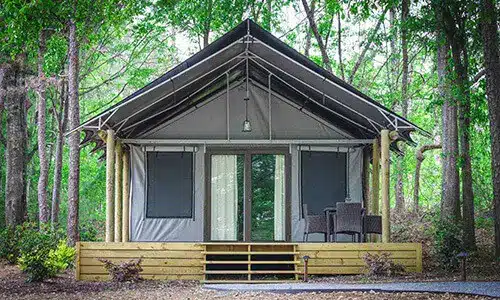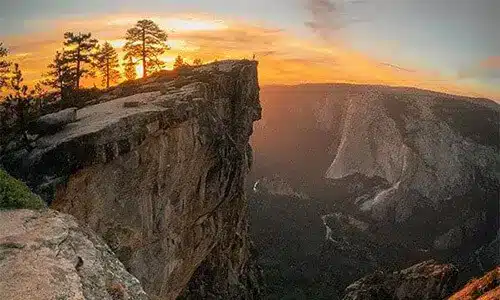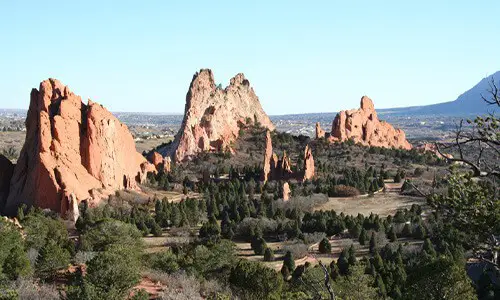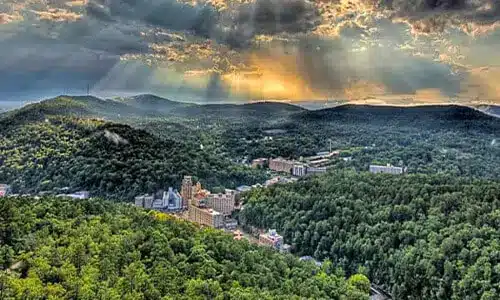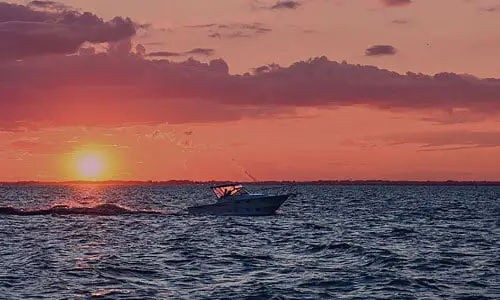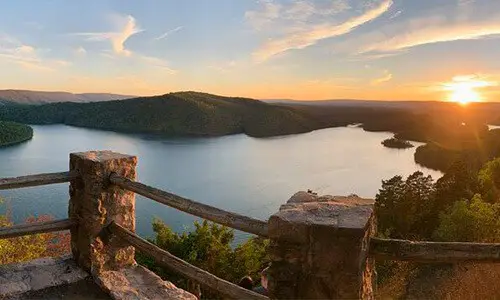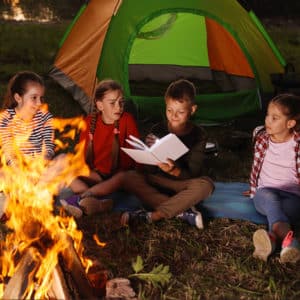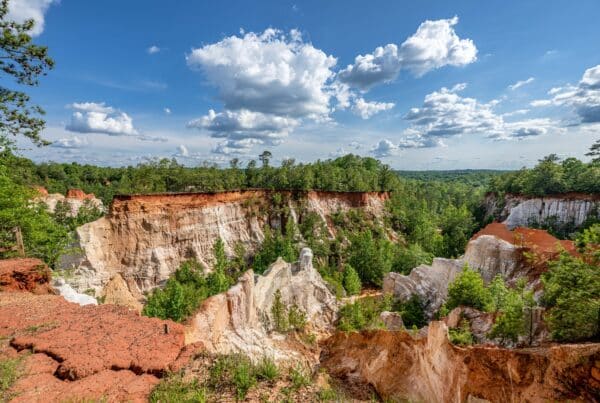April 8, 2024 will mark a breathtaking and rather rare moment in time. On this day, a total eclipse will pass across North America. This will be the first since 2017 and the last until 2044.
Did a quick “how can I view the solar eclipse” Google search lead you here? You have made it to the right place! We’ve got your total solar eclipse viewing guide. In this blog, we’ll cover everything you need to know about the upcoming solar eclipse, including:
- What is a total solar eclipse?
- Where to view the 2024 total eclipse
- An eclipse viewing road map
- Must-haves for eclipse viewing
The big moment is swiftly approaching, so there’s no time to waste. Let’s get into it!
What is a total solar eclipse?
In the event of a solar eclipse, the Moon passes between the Sun and Earth. In doing so, it completely blocks the Sun’s face, causing the sky to darken. In those moments, it will look as if it were dawn or dusk— no matter the time of day.
If you are in the path of totality, the Sun will be entirely covered by the Moon’s shadow and you will experience a total solar eclipse. Total solar eclipses last between 10 seconds to about 7.5 minutes.
Should the weather allow, you will also be able to see the outer atmosphere of the Sun, known as the Sun’s corona, which, on the average day, is obscured by its brightness.
If you already find yourself along this path, consider yourself lucky! An estimated four million people are expected to travel just to get the chance to see what will be the longest totality on land in more than a decade.
Where can you see the total solar eclipse?
There are quite a few places across North America to view the solar eclipse. The path of totality will span the United States from Texas to Maine, as well as parts of Mexico and Canada.
Ready for some eclipse chasing? Here is everywhere you can see the total eclipse:
- The Pacific Coast of Mexico
- Texas
- Oklahoma
- Arkansas
- Missouri
- Illinois
- Kentucky
- Indiana
- Ohio
- Pennsylvania
- New York
- Vermont
- New Hampshire
- Maine
- Southern Ontario
- Quebec
- New Brunswick
- Prince Edward Island
- Nova Scotia
- Newfoundland
Take a look at NASA’s Solar Eclipse Map for a more in-depth look at this path and what time you can expect to experience the eclipse.
Where to Stay for Eclipse Viewing
Another eclipse like this won’t happen again until 2044 in North Dakota and Montana or 2045 from California to Florida. So, we say chase the eclipse while you can! The path of totality will cross over 27 parks across the United States; however, there are only two National Parks that will experience this totality:
- Arkansas: Hot Springs National Park
- Ohio: Cuyahoga Valley National Park
If you are traveling to either for this national celestial event, RVC Outdoor Destinations has a place for you to stay—no matter your camping style— with cottage rentals, tent sites, RV spots, and yurts.
Where to Stay in Hot Springs, Arkansas
Just 5 minutes outside of Hot Springs, Catherine’s Landing is the perfect place to stay and one of the best places to experience the total solar eclipse.
Eclipse Time for Hot Springs:
| Partial Eclipse Starts | 12:31 PM |
| Total Eclipse Starts | 1:49 PM |
| Maximum Eclipse | 1:51 PM |
| Total Eclipse Ends | 1:53 PM |
| Partial Eclipse Ends | 3:10 PM |
Complete with world-class fishing, hiking trails, and even ziplining through the property; there is something for everyone – even your pets can let loose at the off-leash “Bark Park.” Not far from the site, there is even more to do and see, from the Quapaw Baths and Spa to Brady Mountain Stables.
Where to Stay Near Cuyahoga Valley, Ohio
Only around an hour from Cuyahoga Valley National Park, Sandusky RV Resort makes for the ideal resting place if Ohio is your destination for solar eclipse viewing.
Eclipse Time for Cuyahoga Valley:
| Partial Eclipse Starts | 1:59 PM |
| Total Eclipse Starts | 3:13 PM |
| Maximum Eclipse | 3:15 PM |
| Total Eclipse Ends | 3:17 PM |
| Partial Eclipse Ends | 4:29 PM |
There are also plenty of things to do around Sandusky, from Marblehead Lighthouse State Park to the world-renowned Cedar Point Amusement Park.
State Parks on the Path of Totality
Can’t make it to the National Parks for solar eclipse viewing? There are plenty of just as gorgeous state parks where you can watch the eclipse.
A few popular State Parks ones to consider are:
- New York: Niagara Falls State Park
- Texas: Garner State Park
- Oklahoma: Beavers Bend State Park
- Missouri: Lake Wappapello State Park
How to View the Solar Eclipse
Let’s cut to the chase. If you already have a special spot to see the eclipse, there is only one more thing you need – solar eclipse glasses.
Whatever you do, DO NOT look directly at the eclipse. The UV rays can burn your retinas and cause serious damage to your eyes in just a matter of seconds. And sunglasses won’t cut it, either. Instead, you will want to purchase eclipse viewing glasses with a special-purpose solar filter.
If you don’t have solar eclipse glasses, there are a few indirect viewing methods you could try:
- Make a pinhole viewer or projector.
- Project the eclipse onto a surface with a telescope or binoculars.
- Build a sun funnel.
Note: You should never look at the Sun through a camera lens, telescope, binoculars, or any other optical device— even while wearing eclipse glasses or using a handheld solar viewer.
Ready for the eclipse?
It’s time for the celestial event everyone is talking about! If your current location doesn’t land within the 115-mile totality radius, it’s not too late to pack your bags (and your solar eclipse glasses) and hit the road. There’s an RVC Resort ready and waiting for you.
For more info on where and when you can experience the total solar eclipse, visit NASA.gov.
